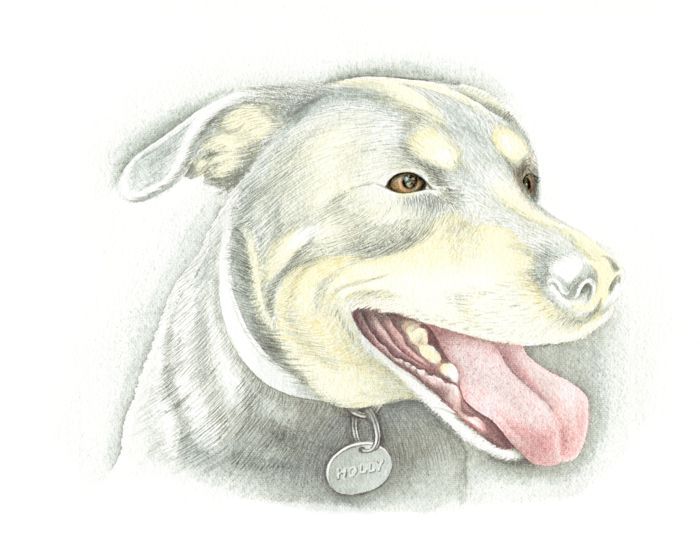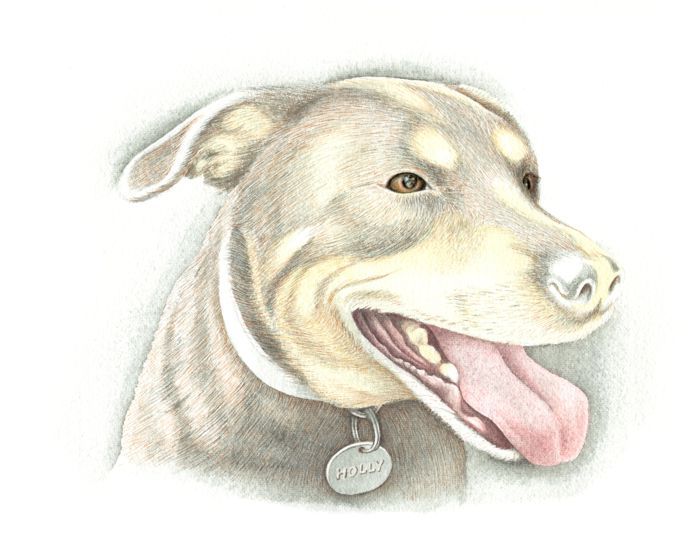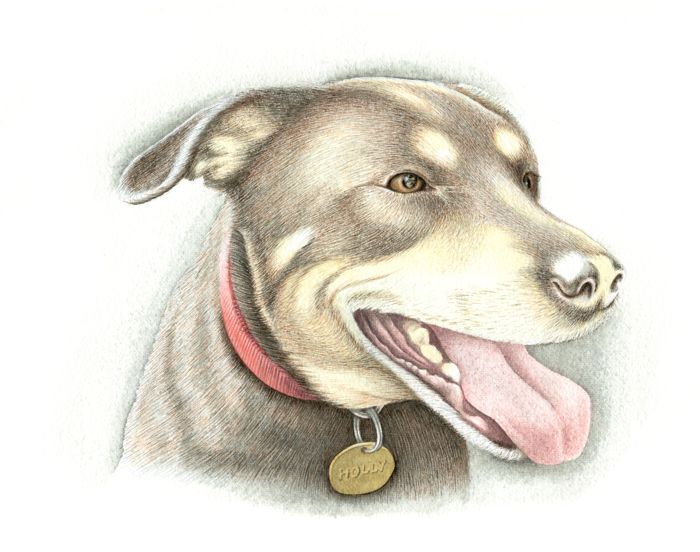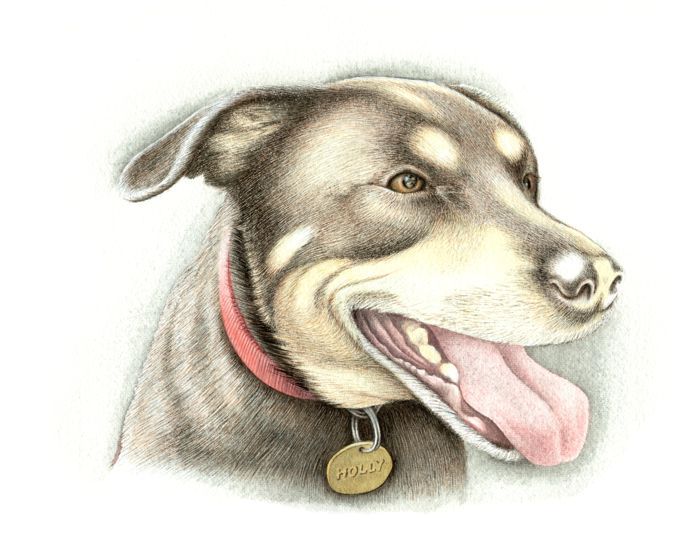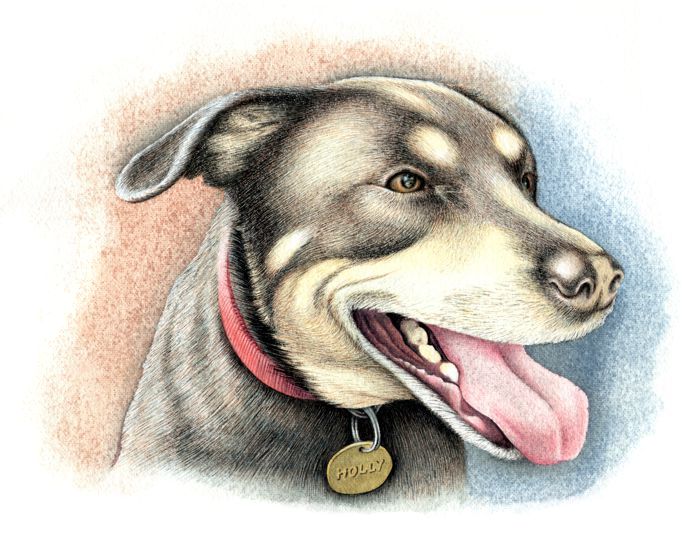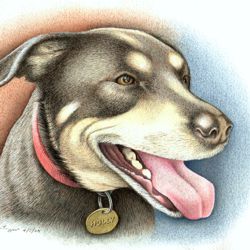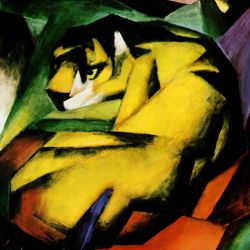How to Paint a Dog with Watercolors
This step by step art lesson demonstrates the technique used to create a watercolor painting of a dog.
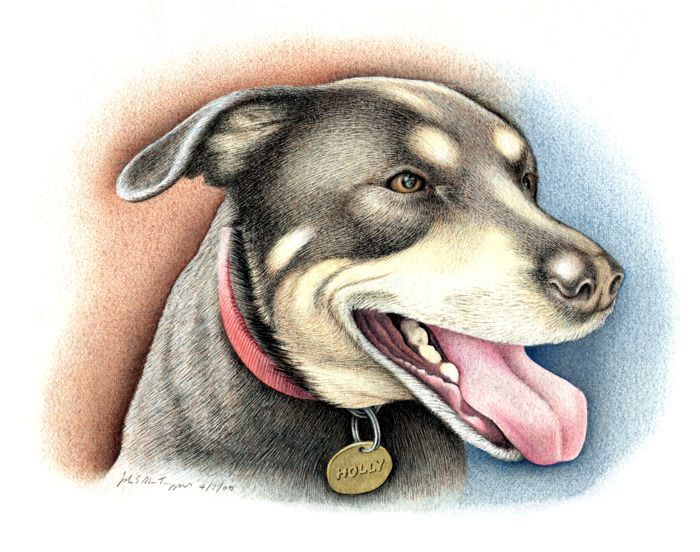
Our art lesson on 'how to paint a dog' is a step by step demonstration of the watercolor painting technique used to create a portrait of 'Holly', who was looked after by Father John Casey of Saint Gabriel's RC Church, Glasgow, Scotland.
The detailed watercolor technique used in our painting of 'Holly' was inspired by the animal drawings of Albrecht Dürer. There are three distinct techniques used here that should be noted.
- The fine details, tones and textures of the image were created by hatching and stippling a more opaque mixture of watercolor using very small sable brushes.
- The broader areas of color were applied in thin transparent washes of watercolor using larger brushes.
- Both of the above techniques were also blended, softened or refined using brushes dampened with clean water.
As a general rule in watercolor painting, you do not use white paint to lighten the tone of a color as white pigments have the contrary effect of reducing its intensity. Instead, you allow the white of the paper to shine through the natural transparency of thinly applied washes of watercolor in order to achieve the most vibrant effects. This means that you must always be careful not to overwork the light areas of an image if you wish to achieve the optimum qualities of a good watercolor.
Note: It is easy to darken a light color in watercolor painting but it is often impossible to lighten a dark color.
Painting a Dog: Step 1
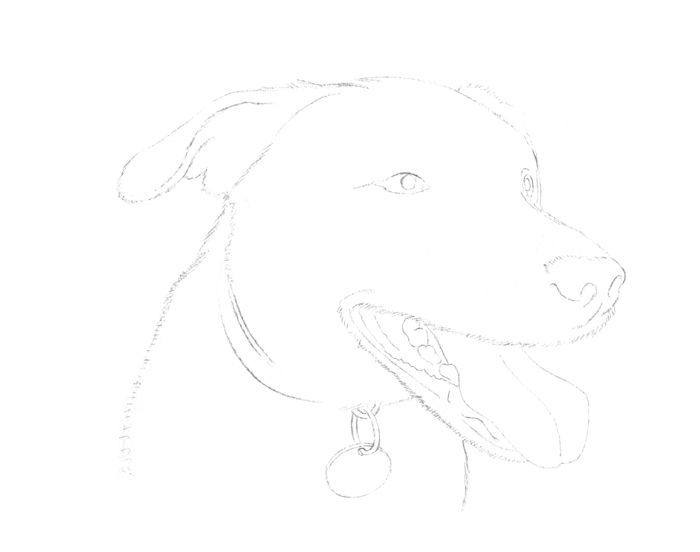
The first step in this lesson is to sketch a basic outline of the head in pencil.
Note: Smooth continuous lines were used for the more defined shapes and details such as the collar, name tag, teeth and tongue. Broken jagged lines were used for the textured edges of dog hair.
Painting a Dog: Step 2
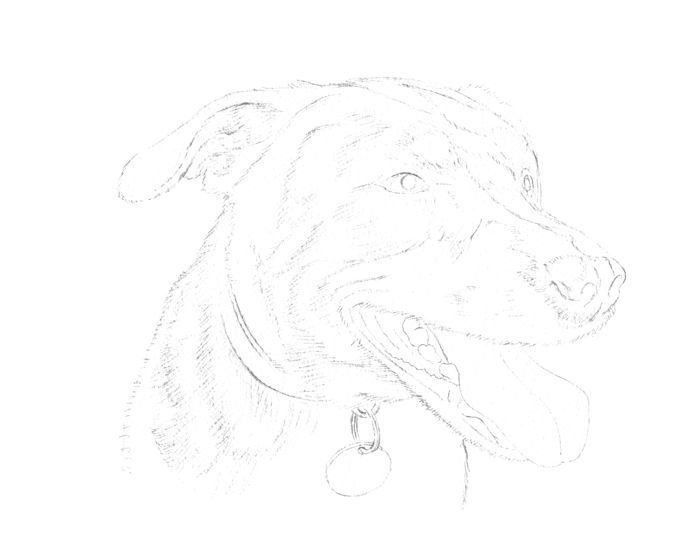
The darker areas of the dog's hair were lightly hatched in linear strokes of the pencil to suggest the tone and texture of its coat.
Note: It is important that all the hatched lines you draw to suggest the tone and texture of the dog's hair follow the direction of its growth.
Painting a Dog: Step 3
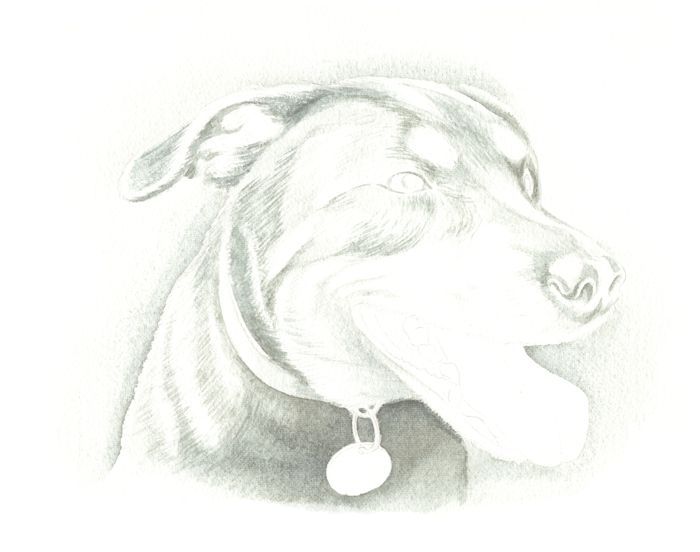
The first stage in applying color was to establish the dark tones of the dog's coat. This was done using a deep earthy green wash to provide a dark foundation for the transparent washes of color that would be painted over it at a later stage.
-
Guided by the preliminary pencil drawing of the dog's coat, due care was taken to ensure that the fine brushstrokes, used to establish the texture of hair over the dark tones, always followed the direction of the hair growth.
-
Some stippled tones were also carefully applied and softly blended with a damp brush around the outside of the image.
-
The aim of this was to create a contrasting edge that would emphasize the lighter sections of the outline.
Note: Once a painted area is thoroughly dry, any visible pencil lines that are no longer useful in establishing tone or texture should be erased as they will muddy lighter washes of color in the later stages.
Painting a Dog: Step 4
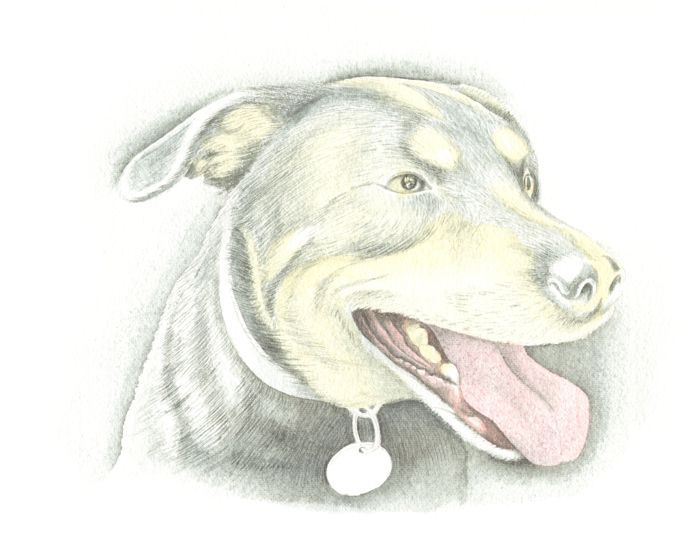
A thin yellow wash was loosely applied over the light sections of the face to establish a color that could be used to suggest the lighter markings on the dog.
-
Using very small brushes the tonal details of the tongue and teeth were carefully hatched and stippled in the same earthy green color that was used for the dog's hair.
-
Once dry, a thin wash of flesh pink was applied to the tongue and gums with a hint of yellow for the teeth.
Painting a Dog: Step 5
At this stage it was decided to confront the key features of the eyes and mouth and take them to a more finished state. These features have to retain their prominence and balance as the rest of the image evolves. It is therefore necessary that the rest of the image is carefully brought to a level of completion that does not overpower the expressive qualities of the eyes and mouth.
-
Using very small brushes the tonal details of the eyes and mouth were carefully built up and intensified using a dark brown, earthy green and flesh pink.
-
All the light tones of these details are simply the white of the paper shining through the thinly applied layers of paint.
-
The tonal details of the name tag and collar were also added at this stage.
Painting a Dog: Step 6
A thin transparent wash of light brown was loosely applied over the darker tones and textures of the image. This starts to change the earthy green tone of the dog's coat into a more natural color.
Painting a Dog: Step 7
The process of building up the depth of color on the dog's coat continued with the application of another thin transparent wash of brown watercolor.
-
More textural detail was also hatched into the coat with fine brushstrokes of this color.
-
At this stage, the colors of the name tag and collar were also applied with transparent washes.
Painting a Dog: Step 8
The process of building up the depth of color, texture and tone of the dog's coat was concluded with a final wash of dark brown paint.
-
This color was also stippled and hatched to heighten the detail of tone and texture, particularly in some of the darker areas of the image.
Painting a Dog: Step 9
The colors of the background (brick red and sky blue) were chosen to represent the setting where Holly sat (against a brick wall on a sunny day) without actually drawing it in detail as it could detract from the image.
- These areas of color were applied in thin transparent washes which were then stippled with small brushes to gradually even them out.
Painting a Dog: Step 10
Finally, the painting of the background was gradually refined and unified by more careful stippling, while some darker brown and blue tones were applied to contrast and highlight the lighter sections of the outline.
-
The aim of this project was to paint a recognizable portrait of Holly in watercolors.
-
A true likeness is important but, as with any artwork you attempt, its success depends on the careful balance of its abstract elements (color, tone and texture) and how they are applied using a suitable painting technique that is sympathetic to the subject.

